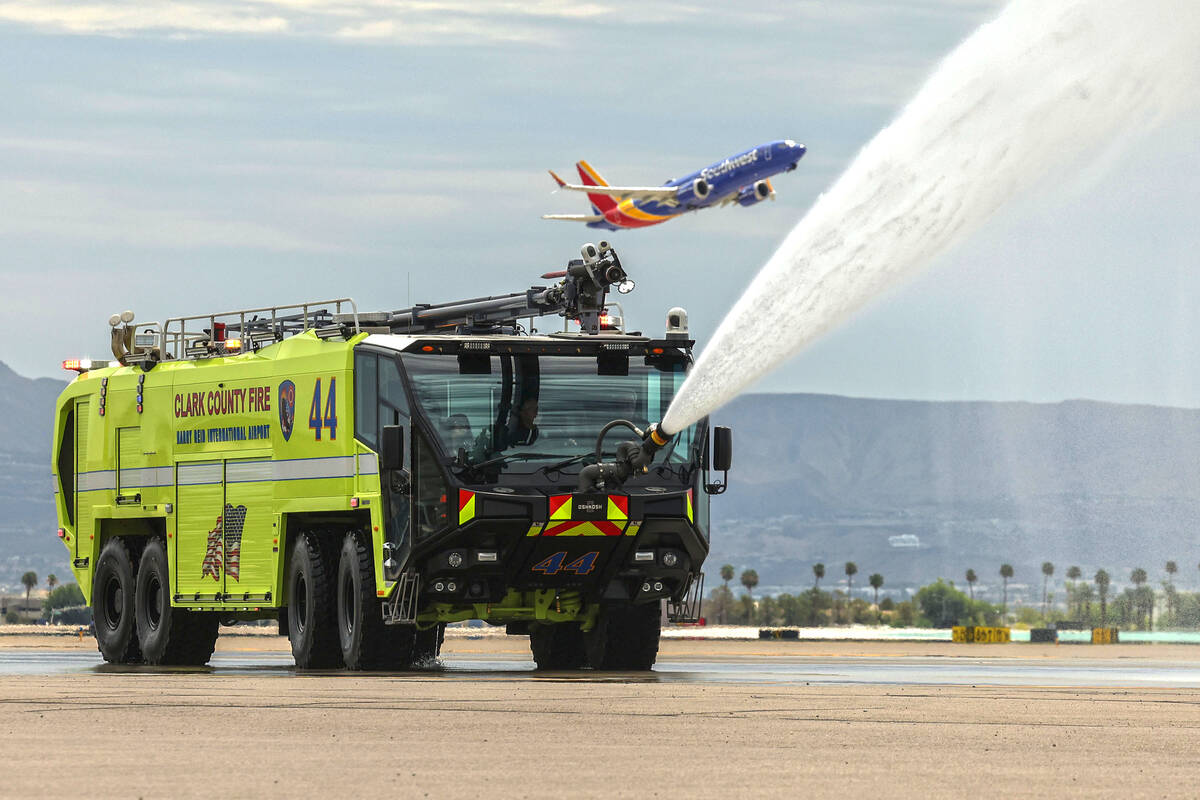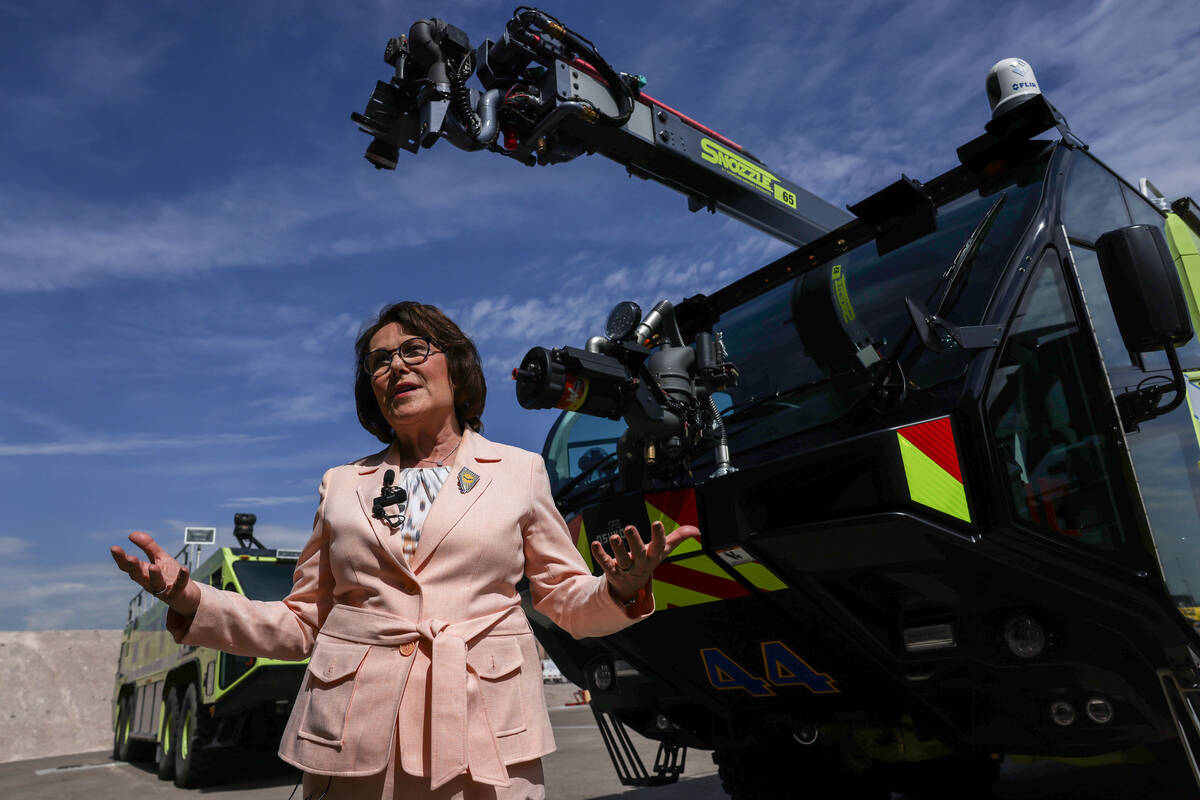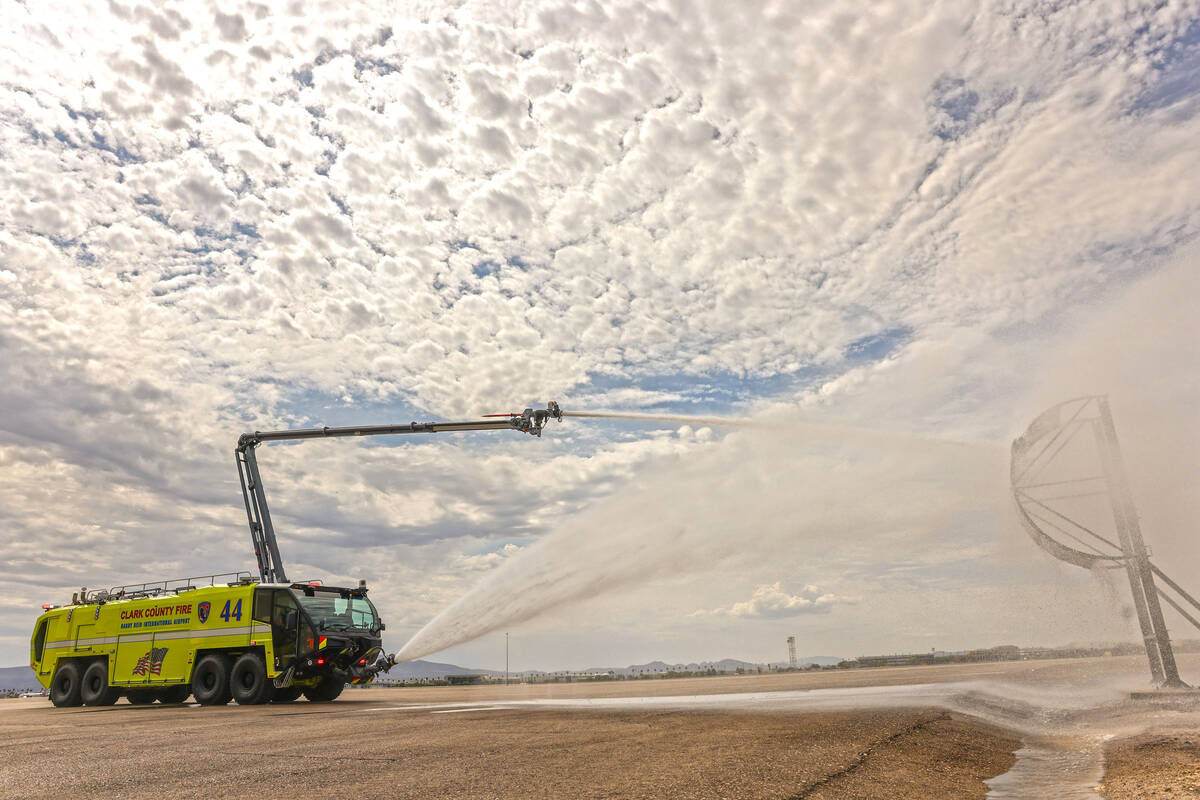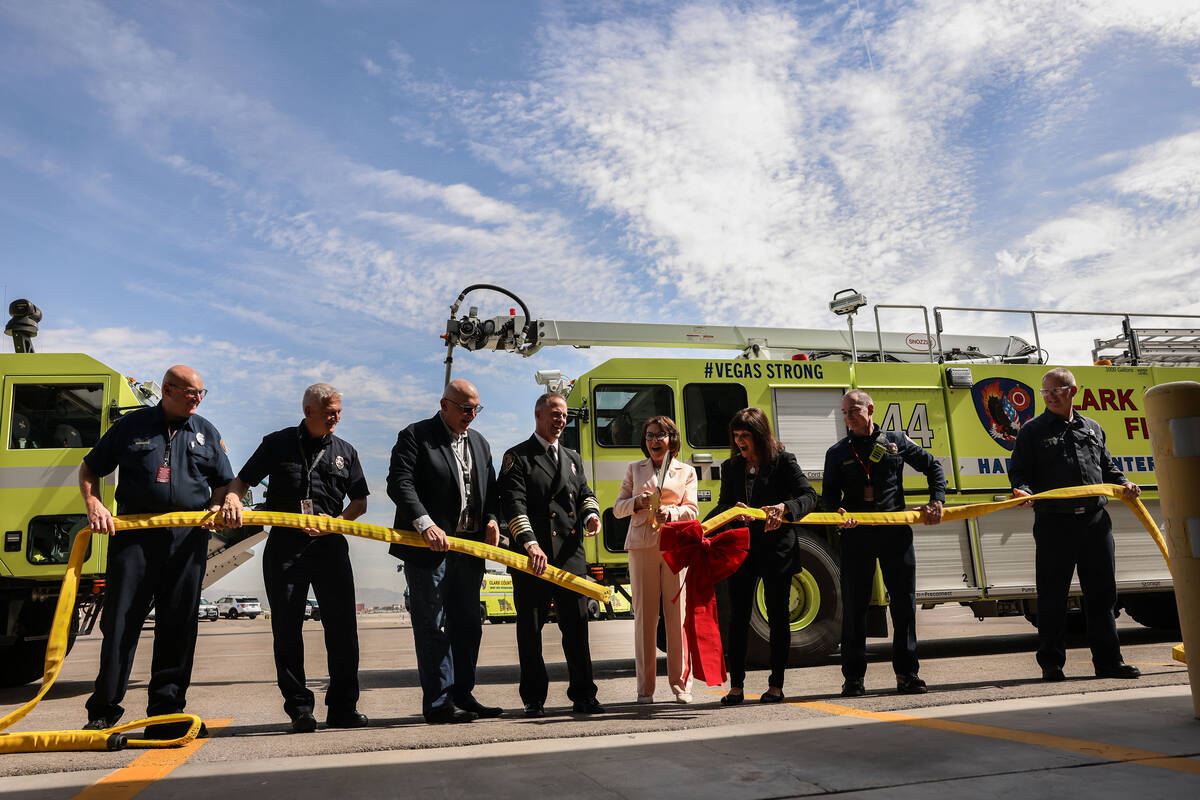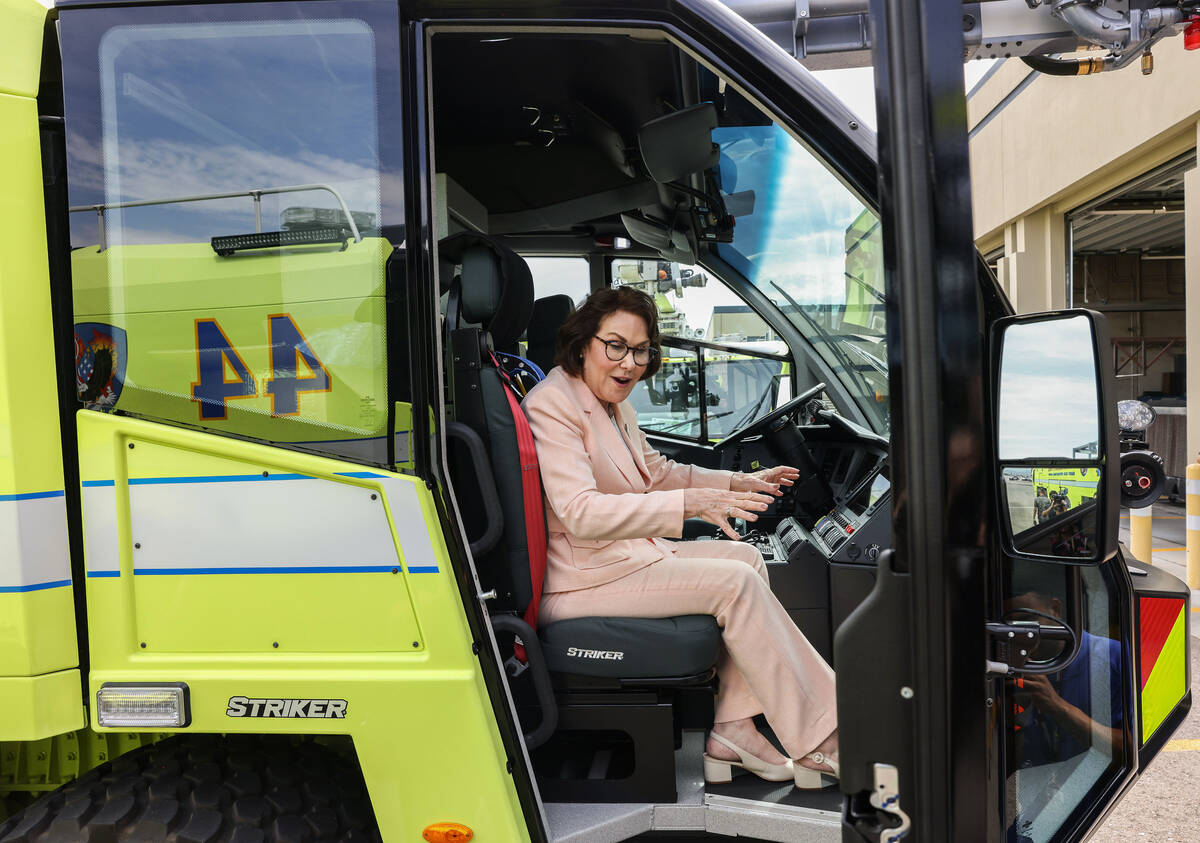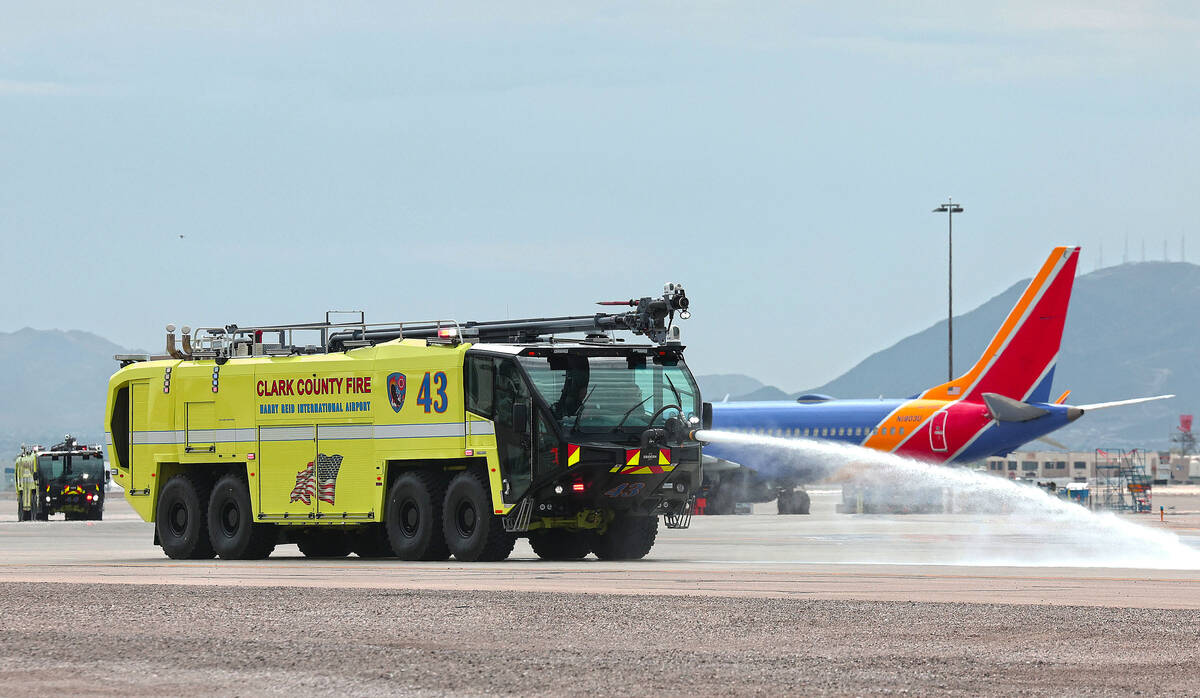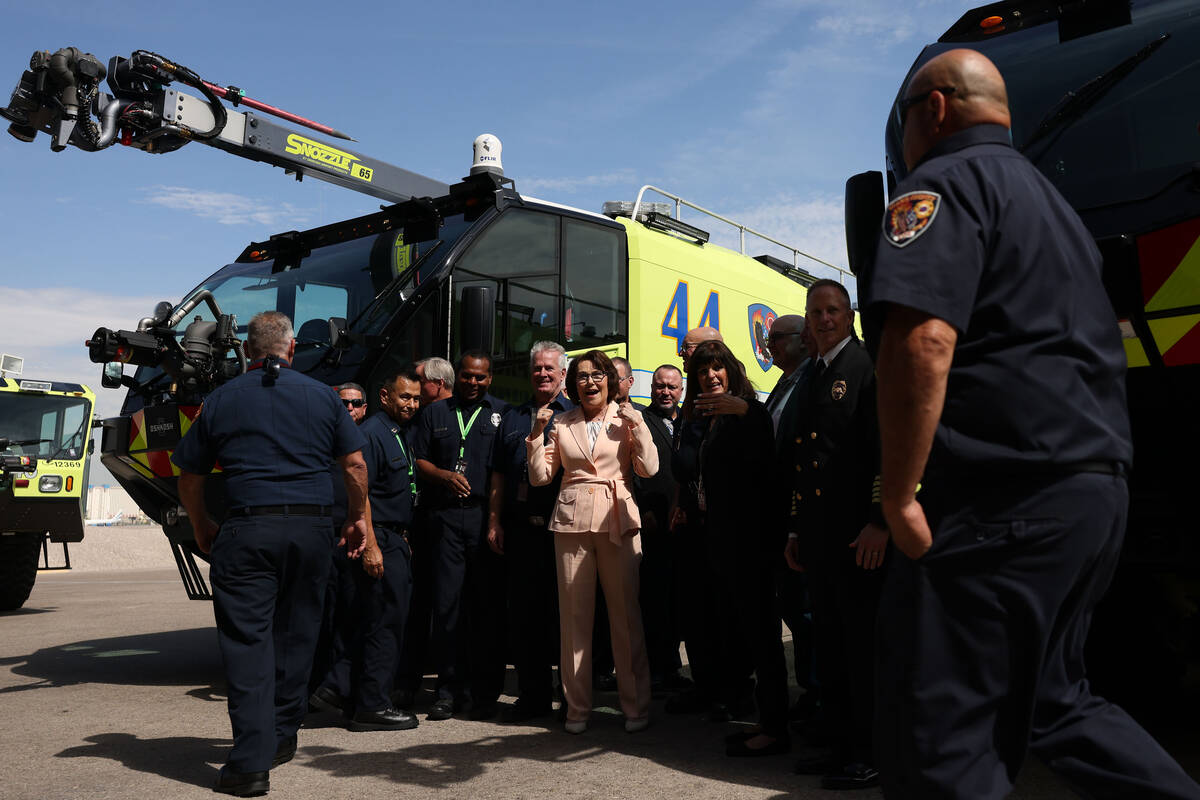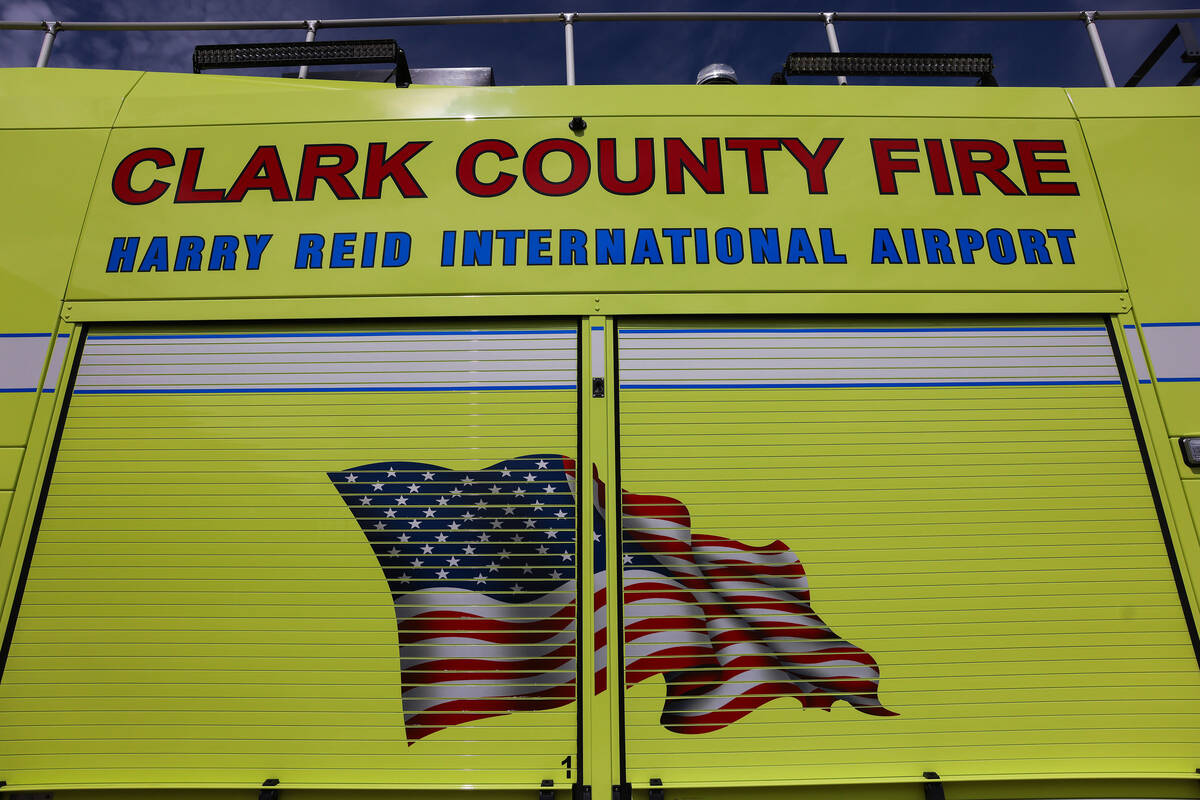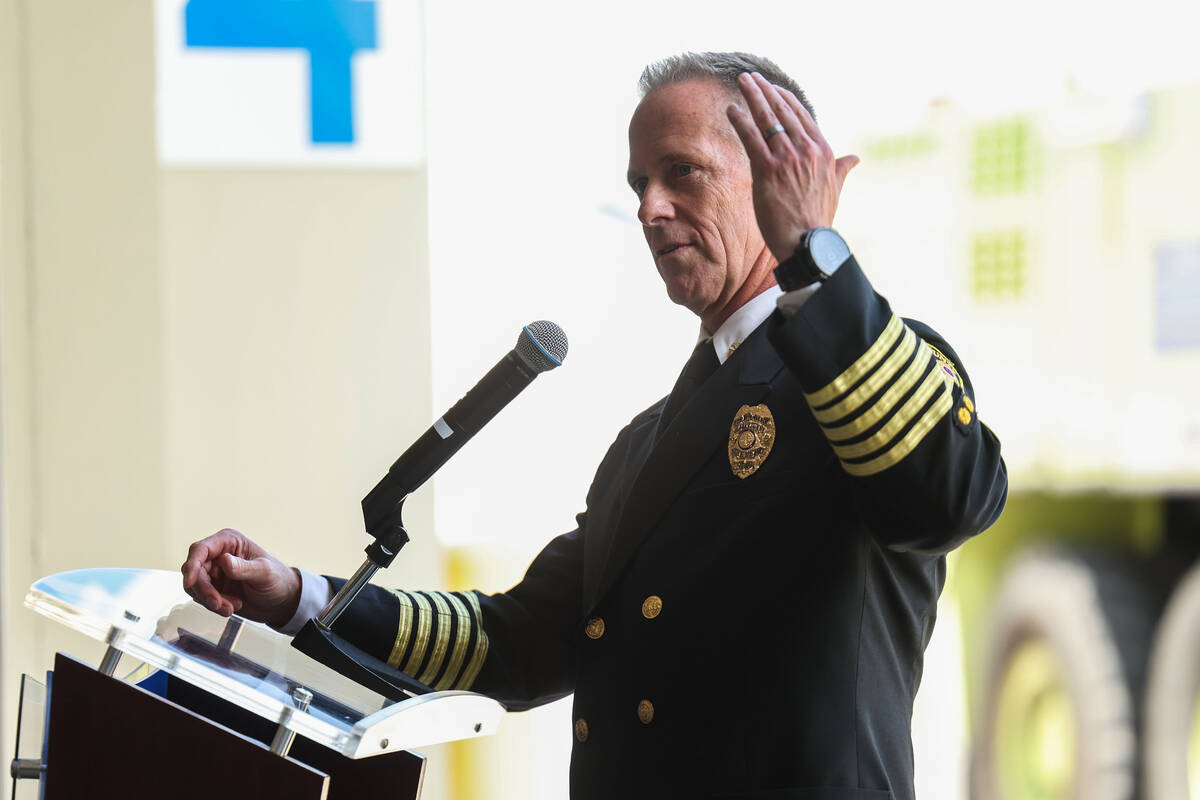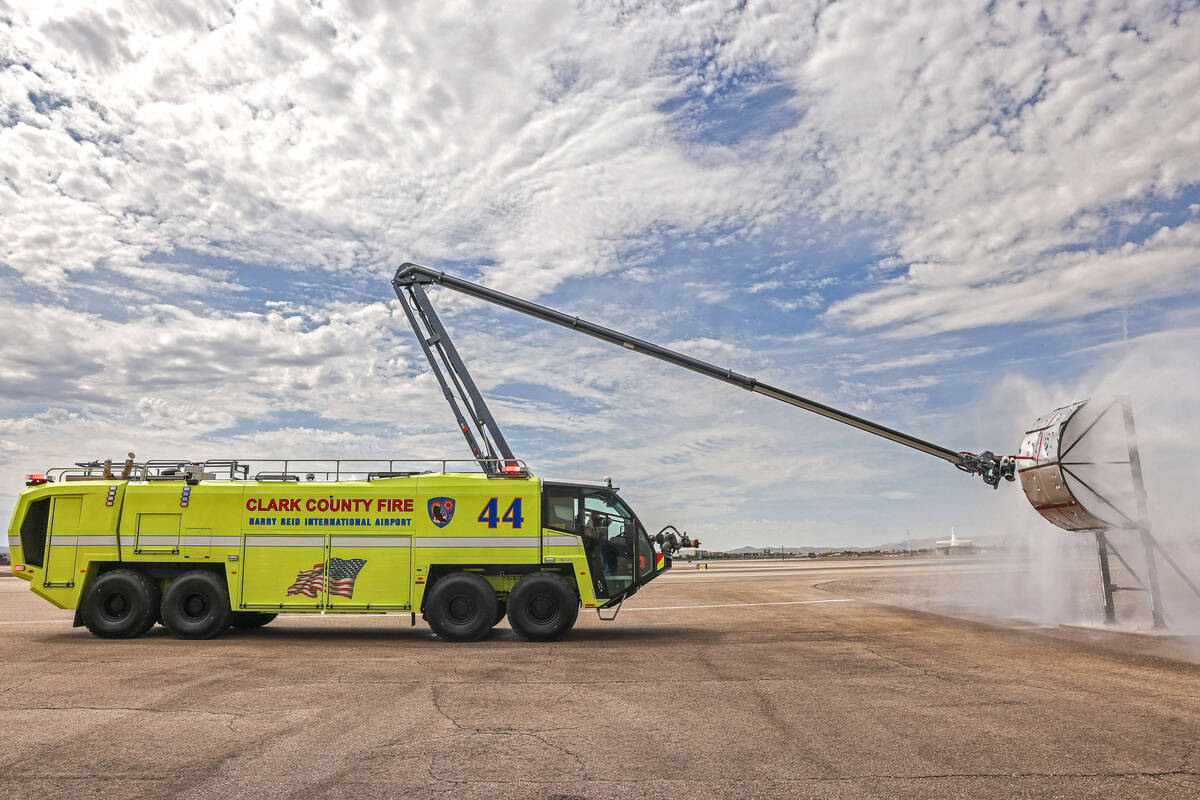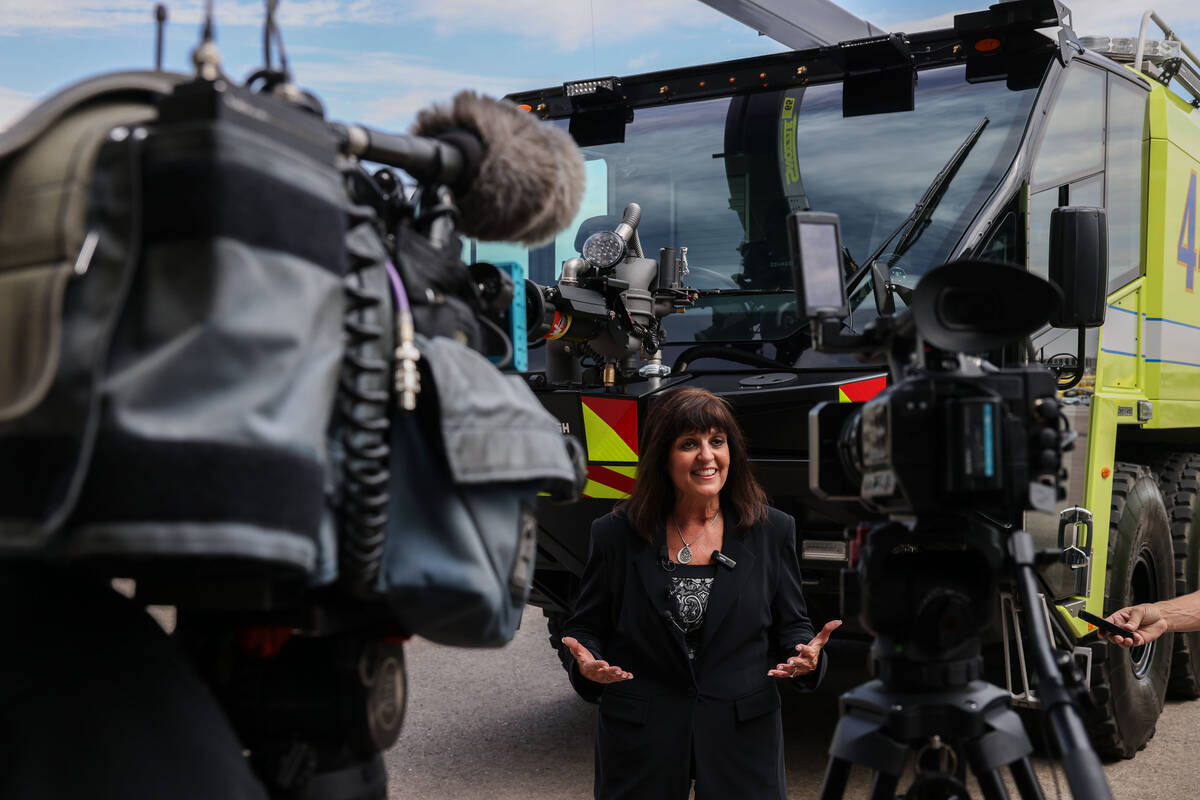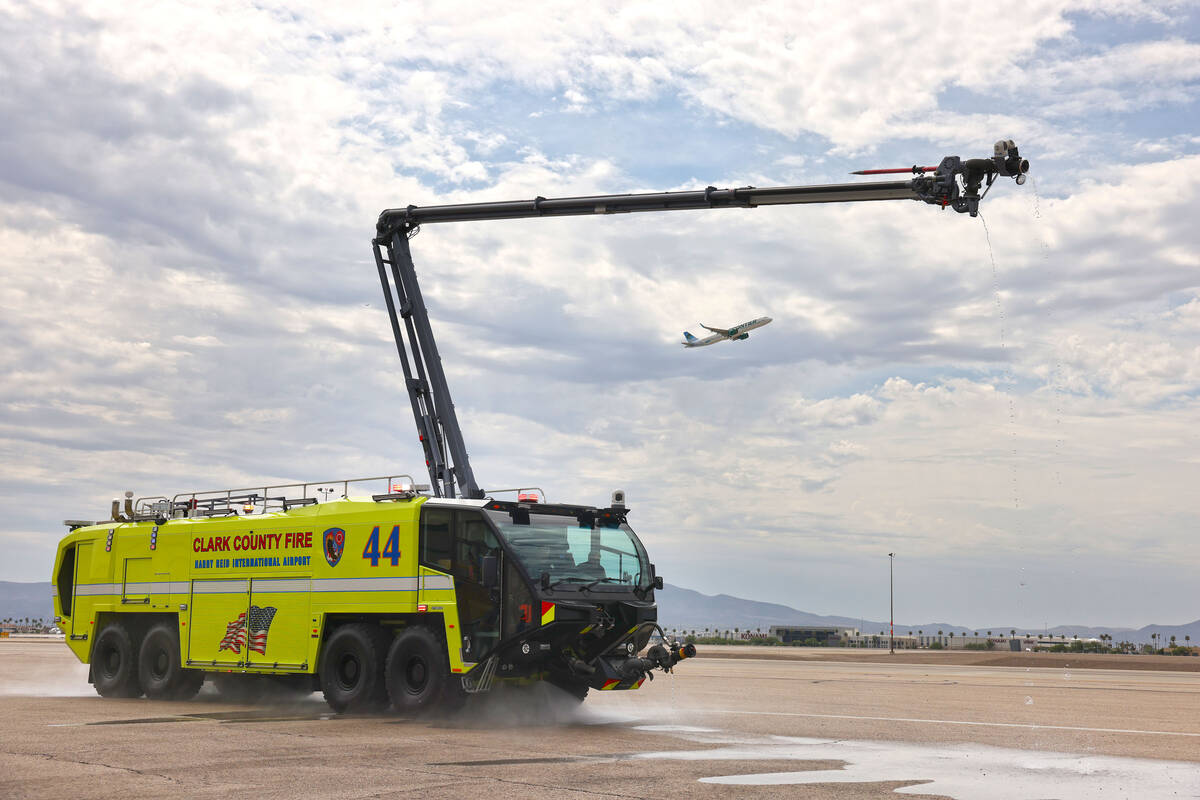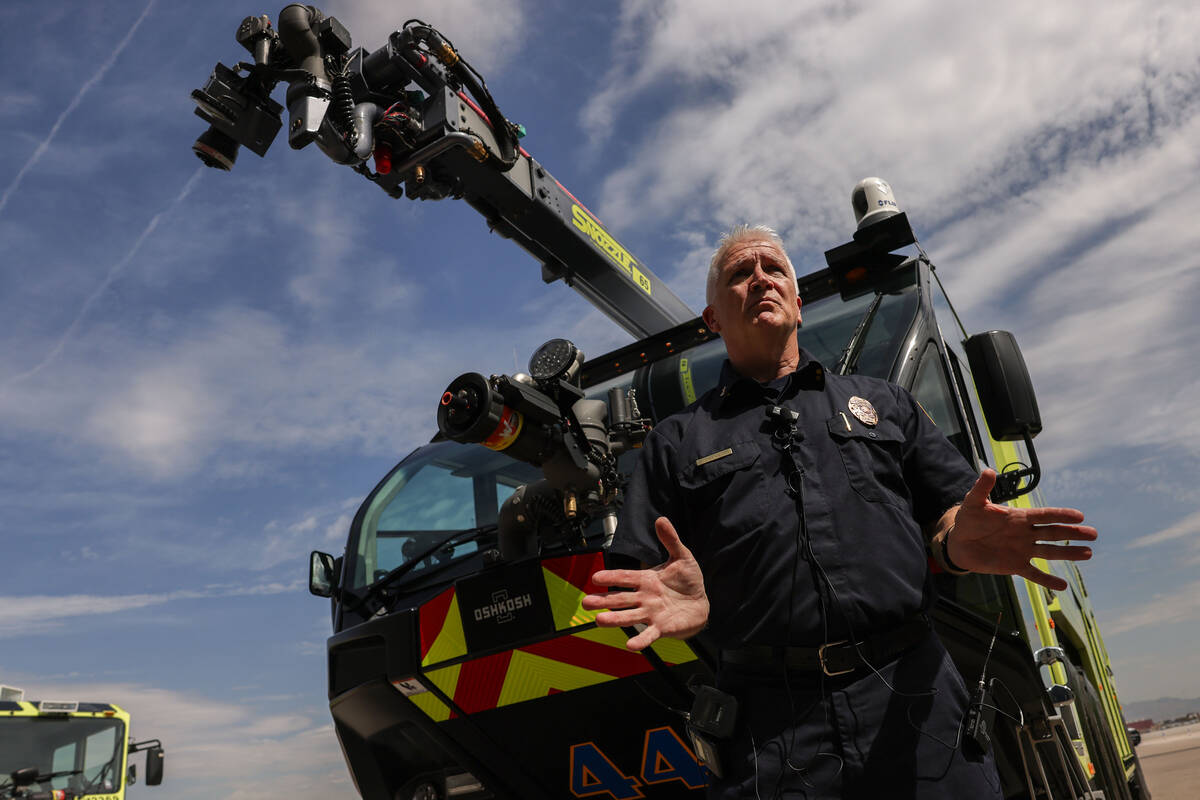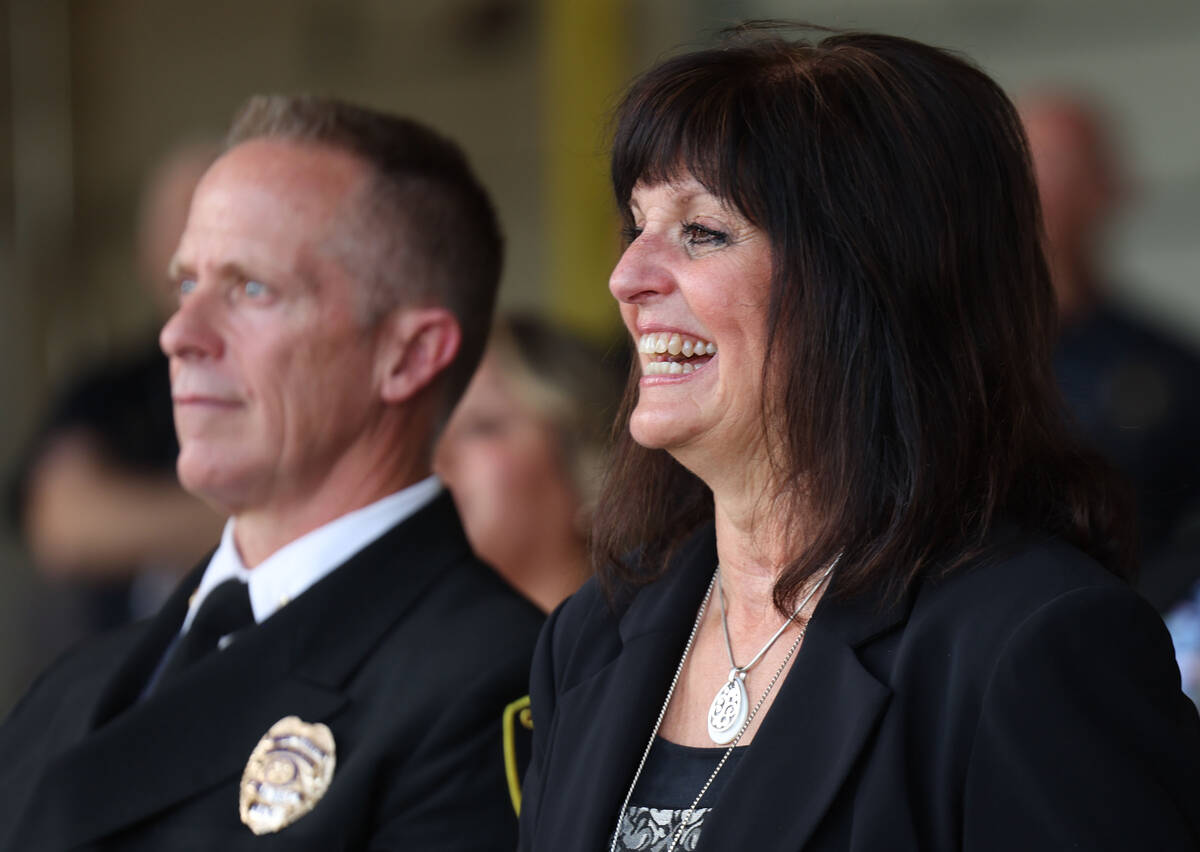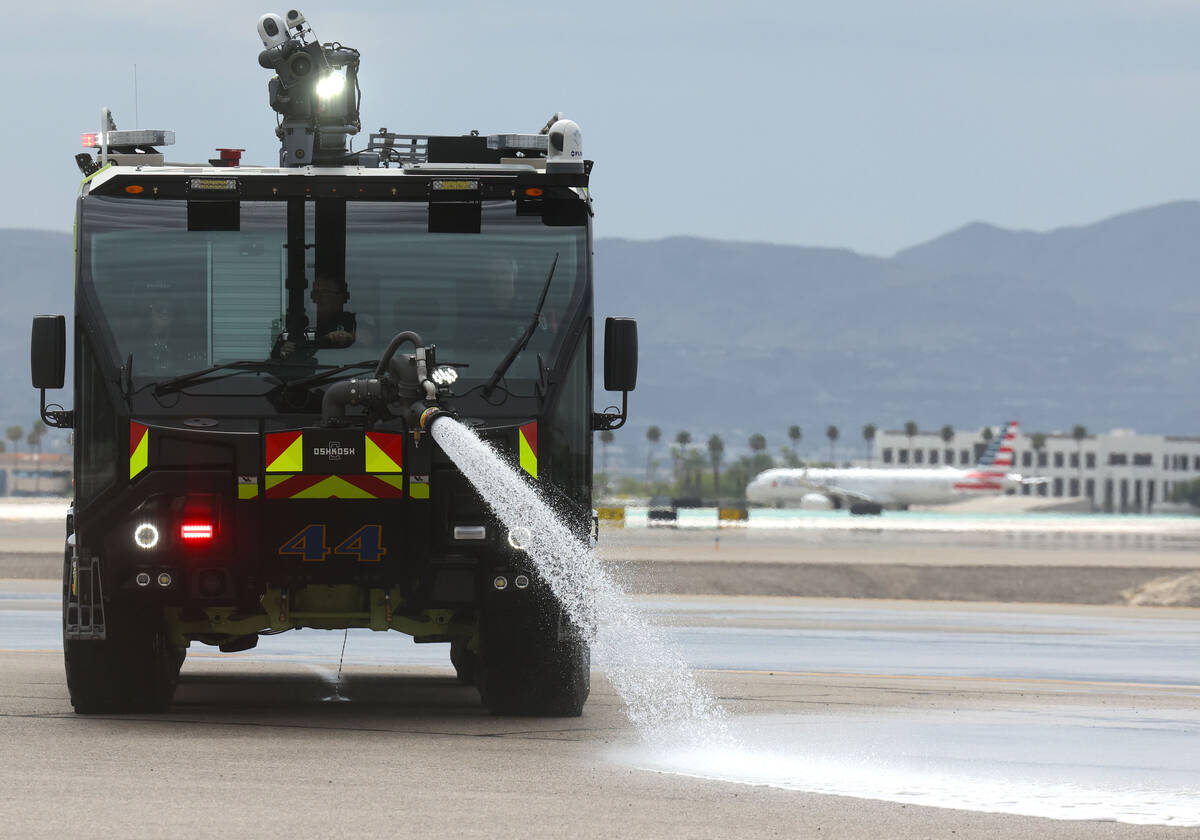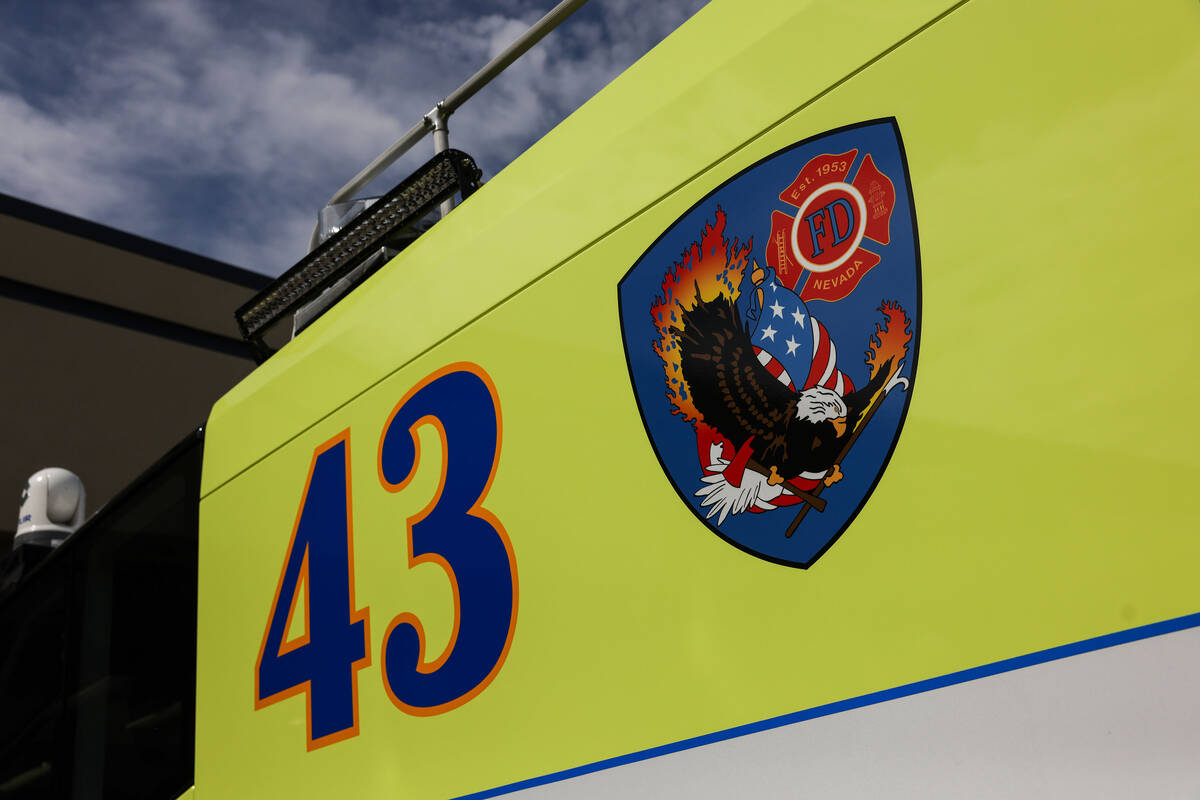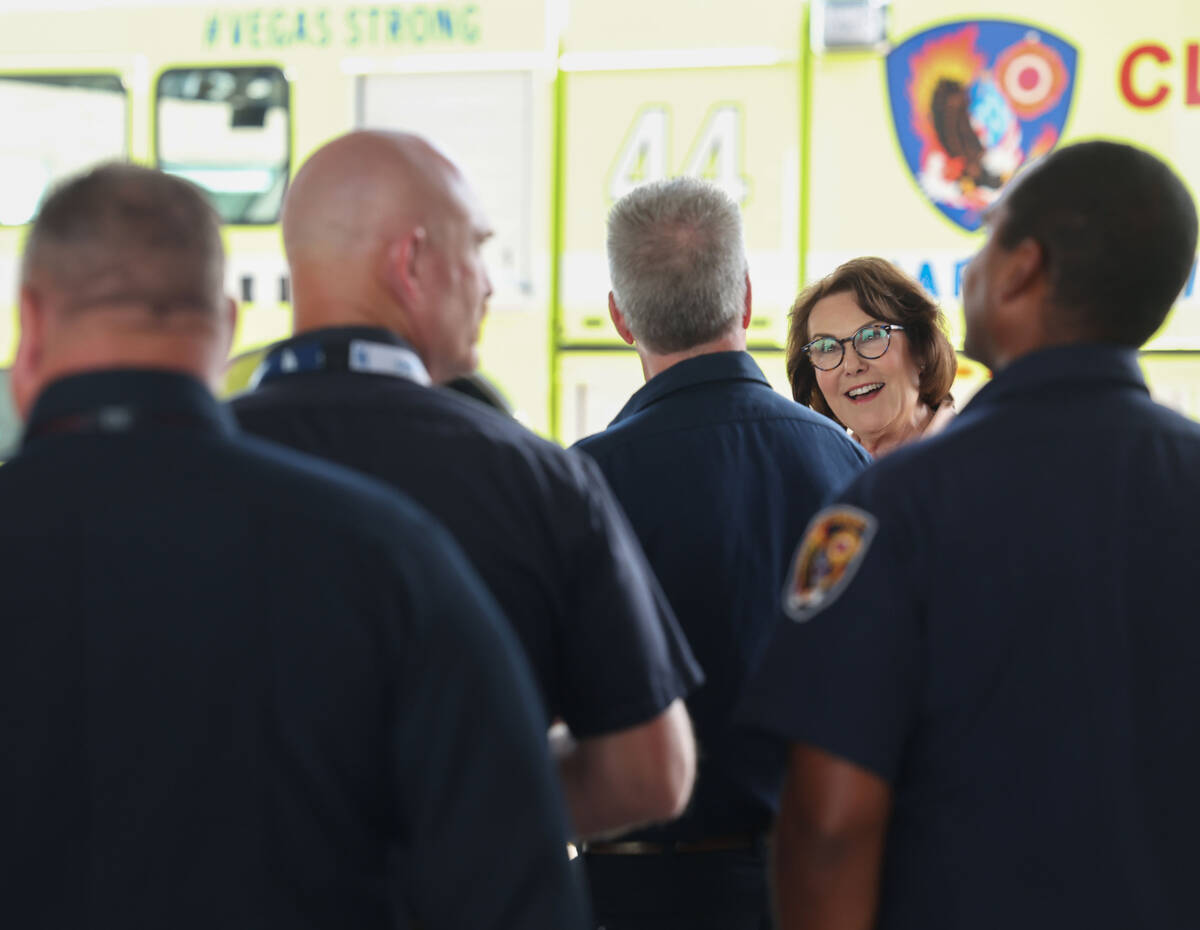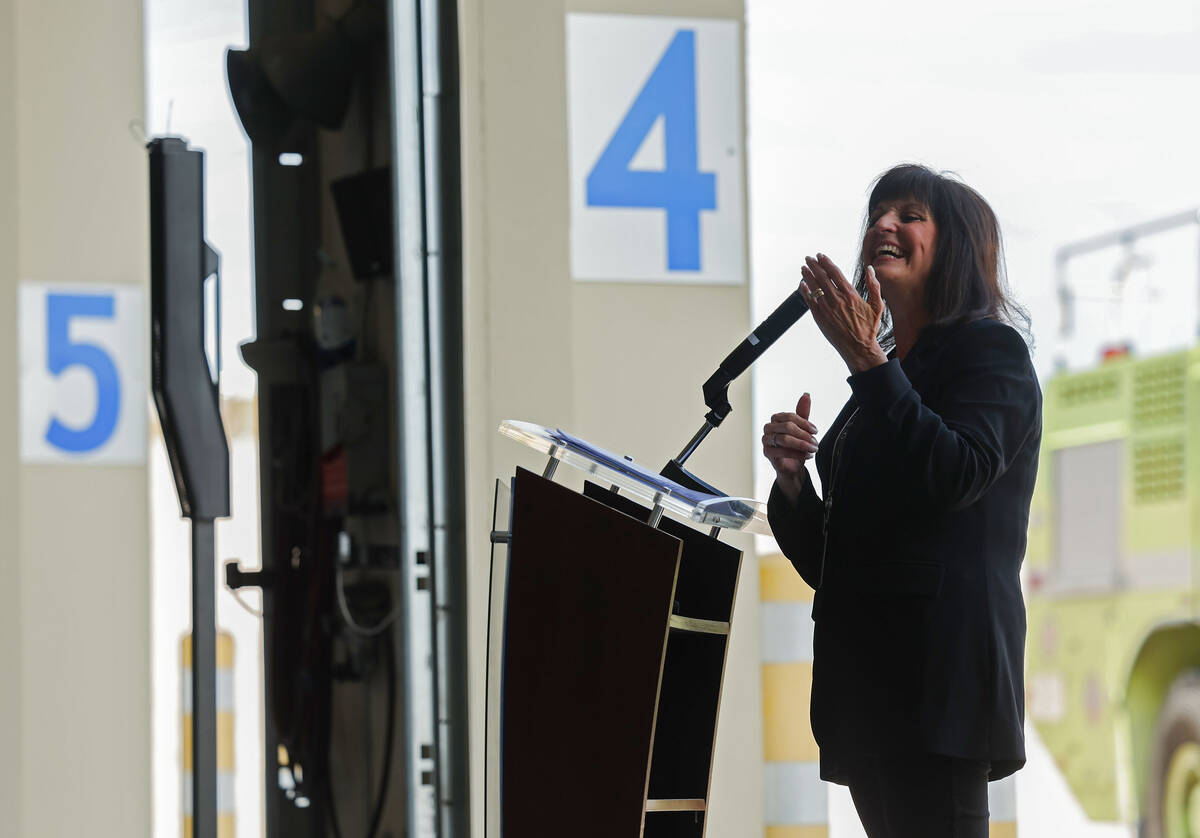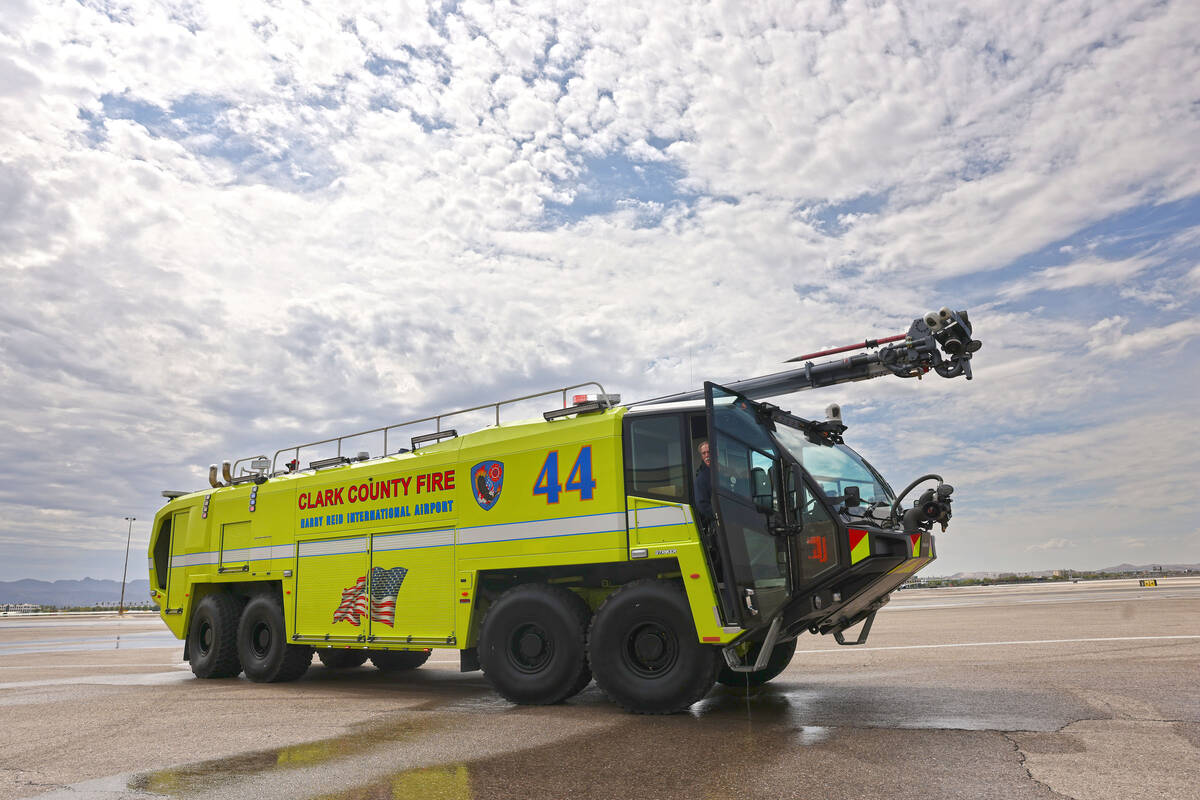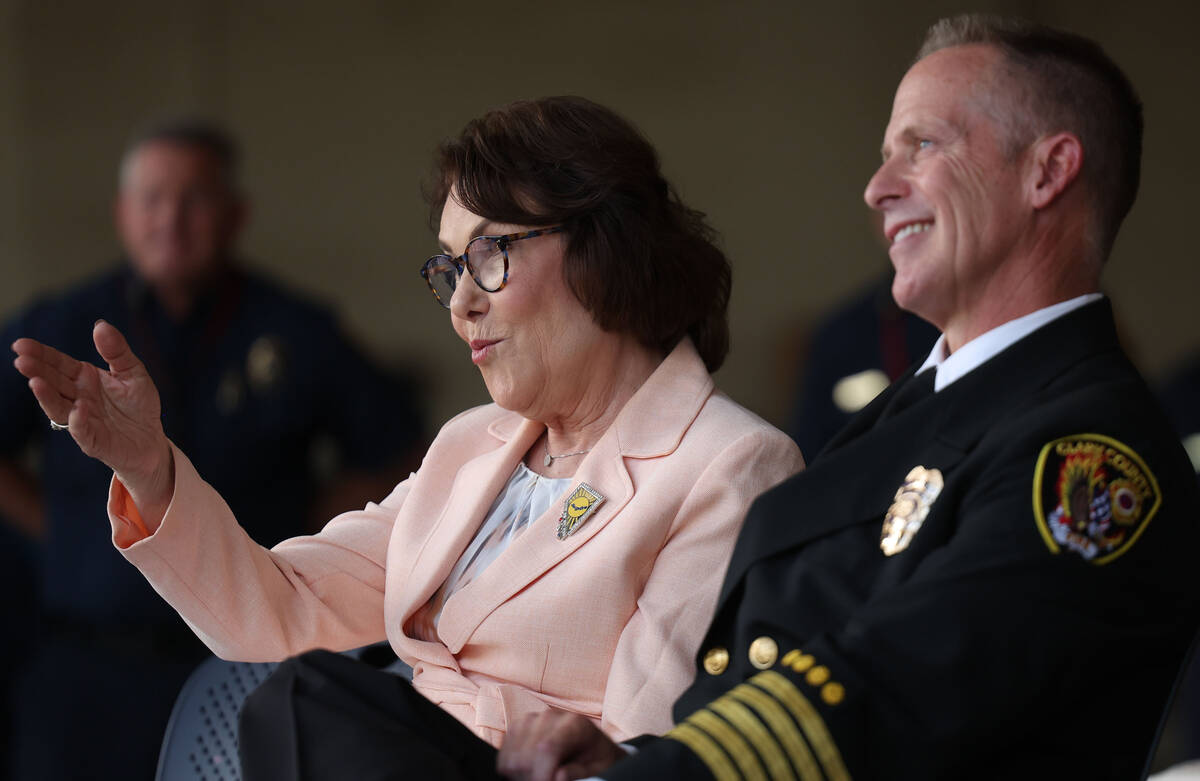Las Vegas airport rolls out new million-dollar fire trucks — PHOTOS
The Clark County Fire Department rolled out two new state-of-the-art fire trucks Friday, showing off the additions to the department’s fire equipment protecting its Fire Station 13.
At $2.4 million each, the Aircraft Rescue and Firefighting (ARFF) vehicles made by Wisconsin-based Oshkosh will help the crew at Station 13 respond more efficiently than in their older model ARFFs, according to Clark County Assistant Fire Chief Scott Carnahan, who oversees operations at the airport station.
The new vehicles were paid for in part by a $3 million federal grant via the Bipartisan Infrastructure Law.
“That kind of funding brings these things to Nevada to make sure that our traveling public that comes here to enjoy a fabulous Las Vegas vacation or whether you live here, work here whatever that is, we want our airport to stay the safest,” Sen. Jacky Rosen said Friday at Station 13, before taking a ride in one of the new trucks. “We also want out firefighters here to have the best equipment, best responses. It’s an investment in their safety and the public’s safety.”
Truck details
The trucks are 55 feet long — a standard fire truck is usually 38 feet long — have two engines and can carry 4,500 gallons of water, 600 gallons of foam and 500 pounds of dry chemical extinguishing agents,Carnahan said.
“Because we do not have the ability to hook up to a fire hydrant and be able to self-supply ourselves,” Carnahan said. “These have pump-and-roll capabilities, so we can actually drive around an aircraft to be more maneuverable.”
The ARFF’s hoses can flow up to 1,200 gallons of water per minute, which is significantly higher than the 150 gallons per minute that a standard fire hose has the capacity to flow, Carnahan said.
“Our goal is to knock down 90 percent of the fire in the first 60 seconds that we’re on the scene,” Carnahan said.
The new trucks use a fire extinguishing agent mix that does not contain harmful forever chemicals previously used by the station.
How are they used
The ARFFs are used in the event of emergency or out-of-the-ordinary landings at Reid airport, Carnahan said.
“We’ll go out and do standbys for most of the times that we have issues (with landings),” Carnahan said. “We watch them land and following them to the gates, if needed. … Our job is to make sure passengers have time to get off the aircraft. The flight crew has 90 seconds to evacuate an aircraft, and for everybody that can’t go out our job is to make sure we can knockdown the fire and go in and get those people that need to be rescued.”
The ARFFs are the first new trucks purpose-built to operate at airports that Reid airport has received in 12 years, according to Director of Aviation Rosemary Vassiliadis. She remembers that vividly, as that is the year Vassiliadis started her stint as director and she is now weeks away from retirement and handing over the reins to James Chrisley.
“Retirement is always bittersweet but knowing I’m leaving it better than when I stepped into the role is something to be very proud of,” Vassiliadis said.
High tech
The new versions of the ARFFs are the third generation built by Oshkosh, which feature significantly better technology compared to the two first generation versions that are being replaced.
There are multiple cameras stationed around the trucks, a boom located at the front of the roof of the vehicle that can extend up to 65 feet, that is used to pierce an aircraft to put water directly in the fuselage of a plane. The new trucks also feature on-board foam testing systems, which eliminates the need to test the foam placed on the ground, to manually look at the testing levels.
“These all have on-board computer systems and it simulates the testing of the foam,” Carnahan said. “So, we never have to put product on the ground.”
Safety and tech features aside, the new trucks have a futuristic look, making the firefighters excited to get to use them.
“It is very different working out on the floor in a regular fire station,” Carnahan said. “They’re like kids in a candy story, watching them get the new toy.”
Contact Mick Akers at makers@reviewjournal.com or 702-387-2920. Follow @mickakers on X.



